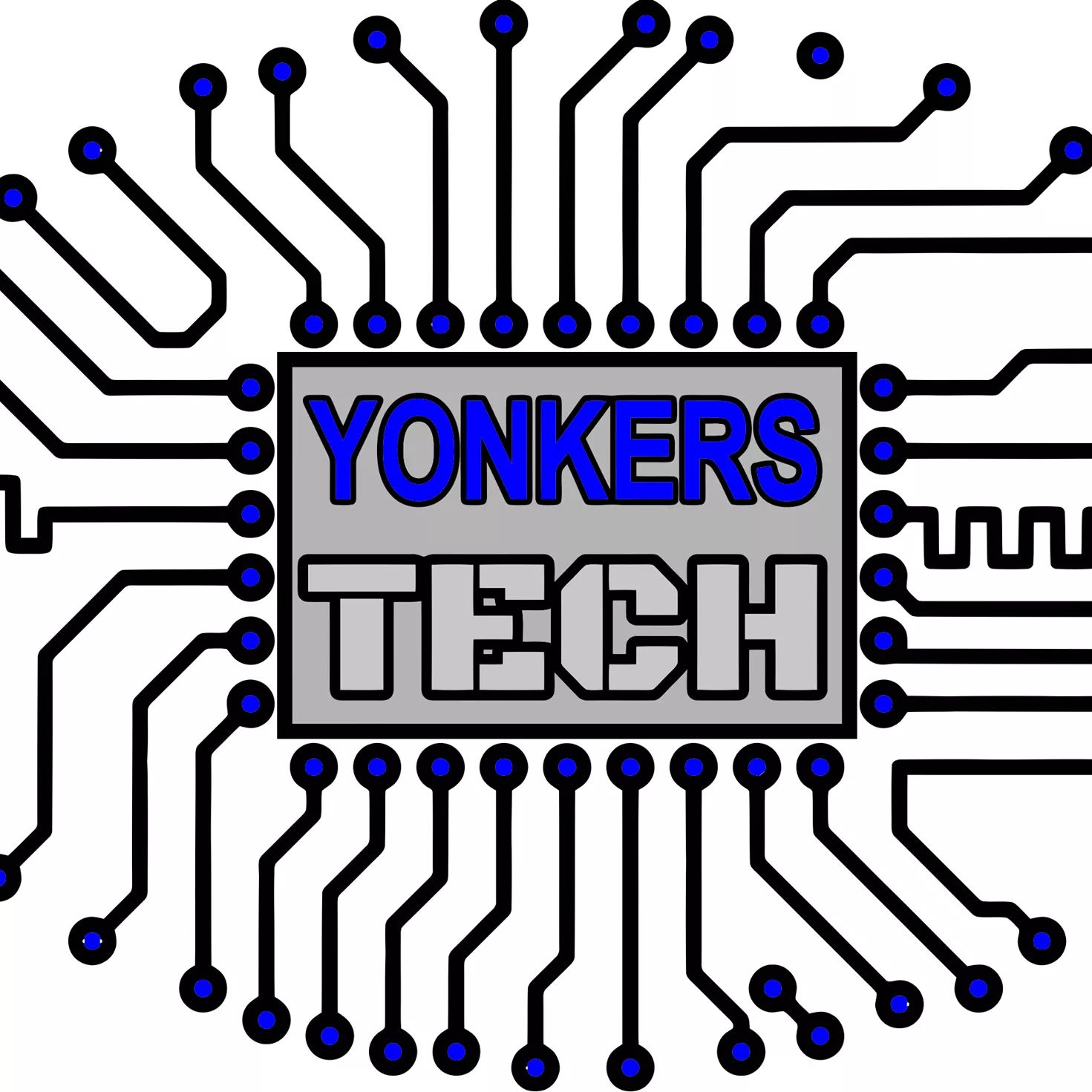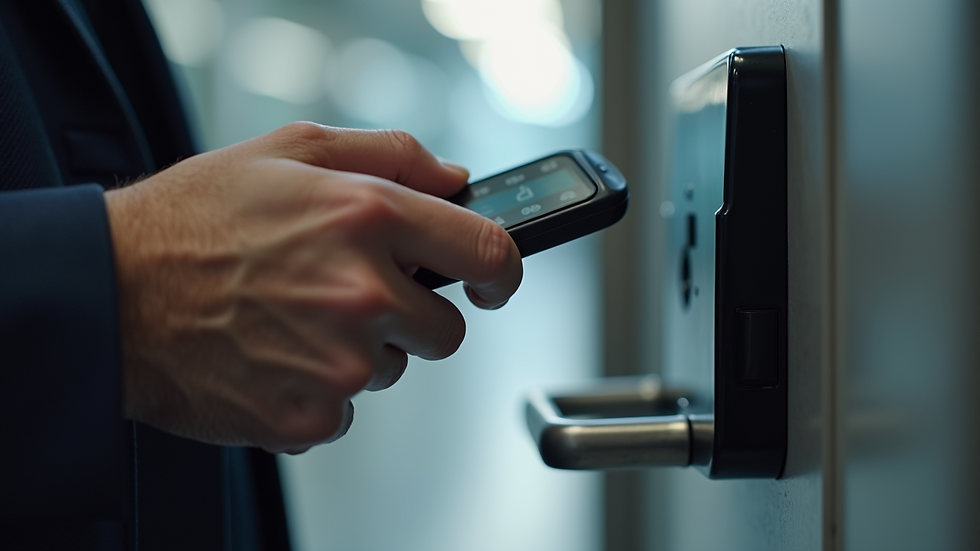Streamline Security with Advanced Access Control Systems
- Yonkers Tech

- Jul 29
- 4 min read
In today’s fast-paced world, securing your business premises is more important than ever. Traditional lock-and-key methods are no longer sufficient to protect sensitive areas and valuable assets. Advanced business access control solutions offer a smarter, more efficient way to manage who enters your facility and when. These systems not only enhance security but also improve operational efficiency and provide detailed access records.
Understanding Business Access Control and Its Importance
Business access control refers to the technology and processes used to regulate entry to physical locations within a company. This can include offices, warehouses, data centers, and restricted zones. The goal is to ensure that only authorized personnel can access specific areas, reducing the risk of theft, vandalism, or unauthorized data breaches.
Modern business access control systems use a variety of methods such as key cards, biometric scanners, PIN codes, and mobile credentials. These technologies replace traditional keys, which can be lost, copied, or stolen. By implementing a centralized system, businesses can easily add or revoke access permissions in real time.
Key benefits of business access control include:
Enhanced security with controlled entry points
Real-time monitoring and alerts for suspicious activity
Detailed logs of who accessed what and when
Reduced risk of internal theft or unauthorized access
Improved compliance with industry regulations
For example, a company can restrict access to its server room only to IT staff using biometric fingerprint scanners. This prevents unauthorized employees from entering sensitive areas, protecting critical data and infrastructure.

How Business Access Control Systems Improve Efficiency
Beyond security, business access control systems streamline daily operations. They eliminate the need for physical keys, which can be cumbersome to manage and replace. Instead, employees use key fobs, cards, or mobile apps to gain entry quickly and securely.
These systems can integrate with time and attendance software, allowing businesses to track employee hours automatically. This reduces administrative overhead and improves payroll accuracy. Additionally, access control can be programmed to allow entry only during specific hours, helping enforce work schedules and reduce unauthorized overtime.
For instance, a manufacturing plant might use access control to restrict entry to hazardous areas during non-working hours, ensuring employee safety and compliance with safety regulations.
Practical tips for maximizing efficiency with business access control:
Use multi-factor authentication for sensitive areas
Regularly update access permissions to reflect staff changes
Integrate access control with other security systems like CCTV
Train employees on proper use of access credentials
Schedule automatic lock/unlock times to match business hours

Which is the Best Access Control System?
Choosing the best access control system depends on your business size, security needs, and budget. Here are some popular types to consider:
Card-based systems: Use RFID or magnetic stripe cards. Easy to use and cost-effective for most businesses.
Biometric systems: Use fingerprints, facial recognition, or iris scans. Offer high security but can be more expensive.
Mobile access: Use smartphones as credentials via Bluetooth or NFC. Convenient and reduces the need for physical cards.
Keypad systems: Require PIN codes. Simple but less secure if codes are shared or guessed.
When selecting a system, consider factors such as scalability, ease of integration, user-friendliness, and vendor support. For example, a small office might benefit from a card-based system, while a high-security facility may require biometric authentication.
It’s also important to evaluate the system’s compatibility with existing infrastructure and its ability to generate detailed access reports. These reports are invaluable for audits and investigations.
For businesses looking for reliable and advanced options, exploring access control systems can provide a range of solutions tailored to different needs.

Integrating Access Control with Other Security Measures
To maximize protection, business access control should be part of a comprehensive security strategy. Integration with surveillance cameras, alarm systems, and visitor management software creates a layered defense.
For example, when an unauthorized access attempt occurs, the system can trigger an alarm and notify security personnel immediately. Cameras can record the event, providing visual evidence for investigations.
Additionally, visitor management systems can issue temporary access credentials, ensuring guests only enter authorized areas for a limited time. This reduces the risk of unauthorized access by outsiders.
Steps to integrate access control effectively:
Choose systems that support open protocols for easy integration
Coordinate with IT and security teams during installation
Regularly test and update all components to ensure compatibility
Use centralized management software for unified control
Train staff on emergency procedures related to access control
By combining technologies, businesses create a robust security environment that adapts to evolving threats.
Future Trends in Business Access Control
The future of business access control is shaped by advancements in technology and changing security needs. Some emerging trends include:
Artificial Intelligence (AI): AI can analyze access patterns to detect anomalies and predict potential security breaches.
Cloud-based systems: These allow remote management and real-time updates from anywhere, improving flexibility.
Contactless and mobile-first solutions: Driven by health concerns and convenience, contactless access is becoming standard.
Integration with IoT devices: Smart buildings will use interconnected devices to enhance security and energy efficiency.
Businesses that stay ahead of these trends will benefit from improved security and operational agility.
Recommendations for preparing your business:
Evaluate current systems for upgrade potential
Invest in scalable and flexible access control solutions
Stay informed about cybersecurity risks related to access control
Collaborate with trusted vendors for ongoing support
By embracing innovation, companies can protect their assets while simplifying access management.
Implementing advanced business access control is a strategic move that enhances security and operational efficiency. By choosing the right system, integrating it with other security measures, and staying updated on future trends, businesses can safeguard their premises effectively and confidently.




Comments